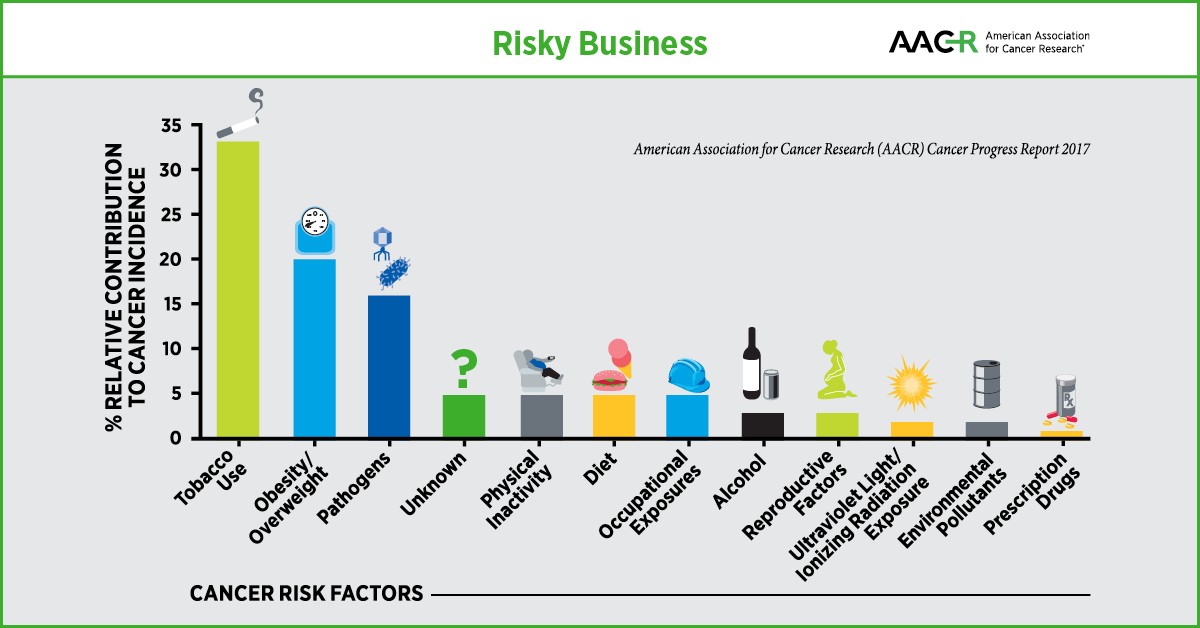February is Cancer Prevention Month. The American Association for Cancer Research (AACR) is proud to support the American Institute for Cancer Research’s Cancer Prevention: Together We Can campaign, an initiative dedicated to promoting evidence-based information to reduce cancer risk.
Experts estimate that nearly half of U.S. cancer cases could be prevented if more people maintained healthy body weight, avoided tobacco products, stayed out of the sun, and took advantage of cancer screening tests and other preventive efforts.
Our blog, Cancer Research Catalyst, routinely covers developments in prevention research. Here’s a look at a few recent posts that delved into ways to combat cancer through obesity prevention, tobacco control, and vaccines. Check back frequently, or subscribe to the blog, for more news on cancer prevention.

Weight is a central focus of cancer prevention efforts. Obesity rates are rising rapidly, and the condition has been linked to several types of cancer.
This year, the AACR hosted hosting a Special Conference, Obesity and Cancer: Mechanisms Underlying Etiology and Outcomes, to explore this topic. Our blog featured an interview with meeting co-chair Elizabeth Platz, ScD, MPH, of the Johns Hopkins Bloomberg School of Public Health, who explained the biological mechanisms that connect obesity and cancer.
Another post examines research into whether nonsteroidal anti-inflammatory drugs could help disrupt the link between obesity and cancer. This potential intervention carries its own risk of side effects, but appears to merit further research as a way to mitigate cancer risk.
It’s well known that cigarette smoking causes lung cancer, as well as 17 other types of cancer and many other chronic diseases, including cardiovascular disease and respiratory diseases. Exposure to secondhand smoke and the use of tobacco products other than cigarettes—including cigars, pipe tobacco, smokeless tobacco products (e.g., chewing tobacco and snuff), and waterpipes—can cause many of these same negative health consequences.
A recent post summarized efforts to curb smoking, including one state’s decision to raise the age at which people can purchase tobacco products. And a guest post by Roy S. Herbst, chairperson of the AACR Tobacco and Cancer Subcommittee, gave a behind-the-scenes look at the advertisements that turned up on television and newspaper ads late last year, in which tobacco companies admitted that smoking is a harmful and addictive behavior.
In the first half of the 20th century, cervical cancer was a leading cause of cancer deaths in women. The invention of the Pap smear dramatically reduced cervical cancer incidence and death rates, by increasing the chances that physicians would detect lesions at a precancerous stage. Beginning in 2006, vaccines against the virus that can lead to cervical cancer became available. Efforts to increase uptake of these vaccines are underway; we covered those initiatives in a post in 2017.
The American Association for Cancer Research (AACR) is the world’s first and largest professional organization dedicated to advancing cancer research. Their mission is to prevent and cure cancer through research, education, communication, and collaboration. For more information, visit www.AACR.org.





